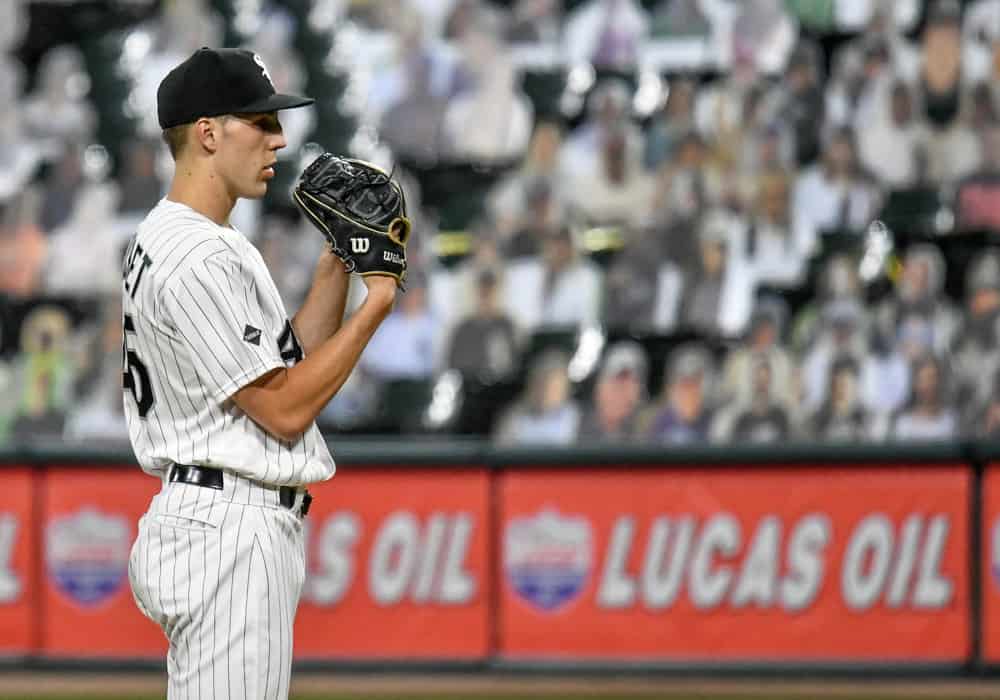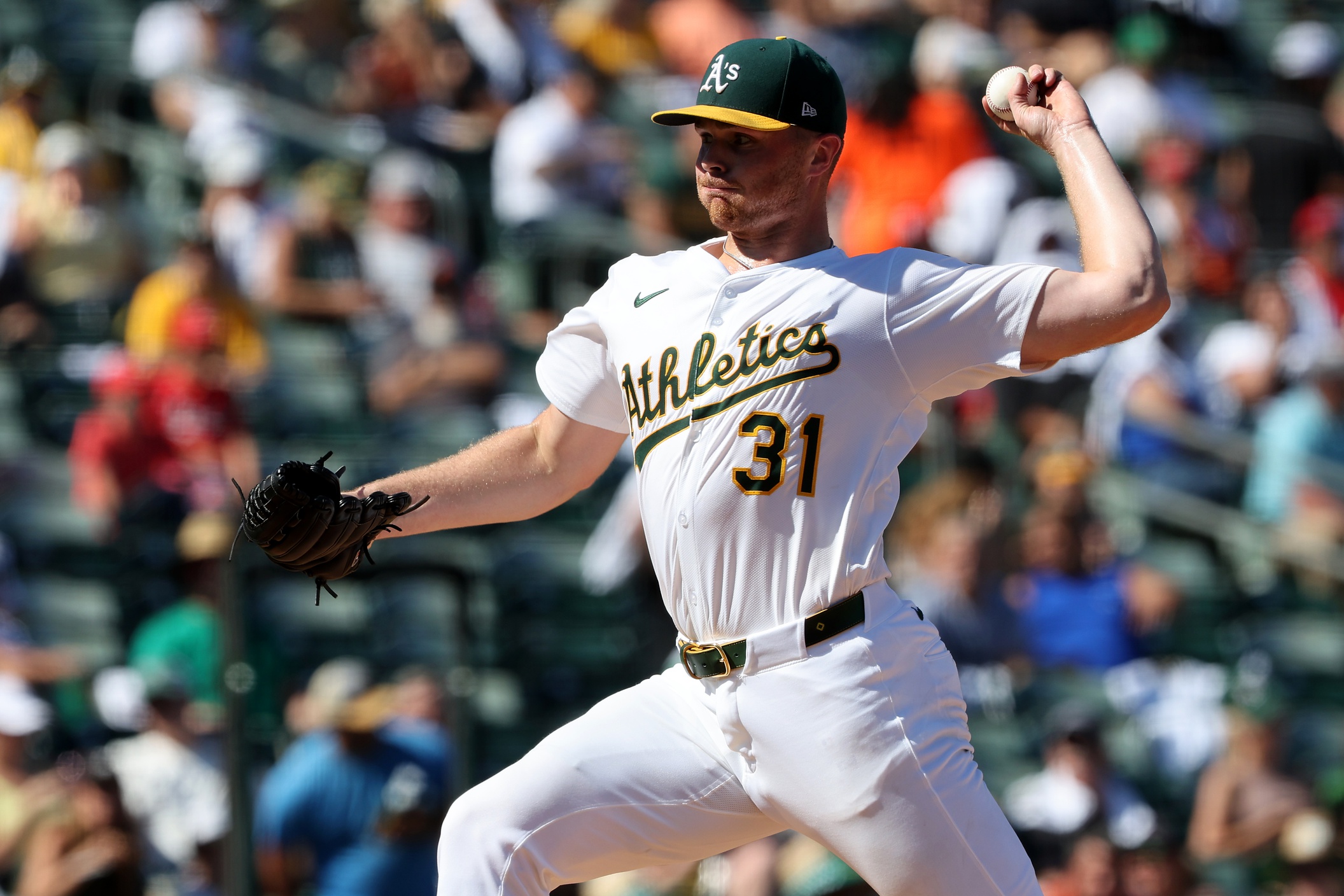Looking at last year's most essential White Sox list, the only guy I truly slept on was Matt Foster, who ranked a paltry 45th out of 59. He ended up being a signficant presence for a White Sox bullpen that couldn't count on more highly touted pitchers like Kelvin Herrera (27th) and Steve Cishek (19th).
In my defense, Foster did not open the season in the 30-man roster's 11-man bullpen, which made his odds of a breakthrough look even steeper as the size of the relief corps contracted. He waited his turn, and then he seized the opportunity.
The rest of the list looks more or less defensible, with the hits and misses balancing out, at least until Eloy Jiménez's knee injury and Garrett Crochet's forearm injury knocked them out of the wild card series against Oakland. The Sox have months to adjust to the former's new mishap this time around, rather than a few days to hope they get it right.
Beyond that, the list's ordered nature doesn't really matter, because as I say every year, this is more a device to pin down the expectations of each player as they enter the season. With the active roster back to 26 and the 40-man roster needing no supplements, his list also returns to its normal size.
Two names to file away: Connor Sadzeck, Tim Beckham
Neither had the spring they wanted, with Sadzeck looking erratic and Beckham largely missing due to an oblique strain. That said, the Sox can occasionally work wonders with a fastball-slider profile that Sadzeck has, and Beckham's been rosterable when healthy and not suspended, so they'd both seem to benefit from the resumption of a minor league season.
- No. 40: Micker Adolfo
I personally don't see his path to Chicago due to the combination of all the time missed, and his whiffing issues whenever he is able to take the field. But he is the team's only outfield prospect who can pull the ball in the air, and enough prospect evaluators still like him enough to keep me from writing him off completely.
- No. 39: Blake Rutherford
I can see him in Chicago, kinda the way Luis González made it to Chicago. It'd take an emergency, but he's lefty, he makes enough contact, and he can stand in a few outfield spots. One problem: González already seems to have dibs for those duties, carrying over to this season with more action during spring training (27 plate appearances to Rutherford's 10).
- No. 38: Nick Williams
If the White Sox need somebody to sop up more plate appearances in a situation that might get to Rutherford, Williams seems like a better use of the playing time. He maintained a 105 OPS+ over his first two seasons with the Phillies, although without secondary skills to carry him in the face of the offensive struggles in encountered in 2019. He got a long look this spring and fared well with it (.300/.364/.475 over 46 plate appearances).
- No. 37: Tyler Johnson
I used to have higher hopes for him, but it seems like the mechanical adjustments he made in order to avoid a recurrence of the strained lat aren't agreeing with him results-wise. He walked more batters than he struck out the last in two of his last three organized sightings (2019 Arizona Fall League, 2021 spring training), and he never factored into the bullpen discussion at the alternate training site last year. It can always click, but it's just not doing so right now.
- No. 36: Luis González
He didn't do a whole lot with the extra plate appearances he got during the spring, going just 4-for-26 with a walk. Still, his ability to cover center better than the other outfield prospects buoys his value.
- No. 35: Gavin Sheets
Unlike the other outfielders to appear on this list, Sheets can boast adequate production at Birmingham, and it seems like he can be taken seriously as a corner outfielder, too. That's partially because the other outfielders under consideration have equally little experience there, but still.
- No. 34: Zack Burdi
- No. 33: José Ruiz
Ruiz is on the 26-man roster, while Burdi isn't. However, if Burdi were out of options, it'd probably be the other way. They both have the same issue: great stuff that spins on them a little too often to place too great of hopes on them.
- No. 32: Billy Hamilton
It seems like he's only on the 26-man roster because Adam Engel isn't. Still, he can offer speed and defense to a manager who might like to take him up on it, so he might have more staying power than anybody initially envisions.
- No. 31: Jonathan Stiever
The White Sox are going to need starter depth during the season, and Stiever's basically the last line of defense internally, unless you like the cut of Bernardo Flores Jr.'s jib.
- No. 30: Jace Fry
He's currently out after undergoing a microdisectomy on his back. The White Sox have enough talented left-handed arms to where his absence shouldn't be felt out of the gate, but a full return will probably give the White Sox a needed boost to compensate to the standard array of midseason injuries.
- No. 29: Danny Mendick
Mendick probably would've made a bench for half the league given his body of work, but it just so happens that his strongest asset -- second base defense -- isn't particularly needed with a roster that includes both Nick Madrigal and Leury García. Without a real strong platoon bat, it's hard to find a reason to play him on this depth chart. He's a nice guy to have in Schaumburg/Charlotte, but that's better for us than him.
- No. 28: Yermín Mercedes
It's great to see him on an Opening Day roster, because he's deserved a longer look at the MLB level than the White Sox have given him the last two seasons. It just so happens that "positionless right-handed power" is something the White Sox aren't lacking, so I'm not sure how he gets the chance to truly showcase his wares.
- No. 27: Jake Lamb
If he can recapture anything close to his 2016-17 form -- and he finally showed a little bit of something with Oakland late last season -- he can ride on the bench for the year, because he bats left-handed and can play third base. The version of Lamb since the early 2018 shoulder injury could be forgotten in a hurry.
- No. 26: Jimmy Lambert
Unlike Stiever, the times I've watched Lambert face MLB-quality hitters, I understand how he can reliably get them out. It's more a matter of whether Lambert's elbow will allow him to fully recover from his Tommy John surgery from two years ago and be the starter depth the White Sox lack.
- No. 25: Reynaldo López
The nice way of putting it is that López will be staying stretched out in Schaumburg in case of a rotation emergency. The not-nice way of putting it is that López's stuff doesn't play at 90-93 no matter the role. Nevertheless, if any of the top five starters get hurt, he's probably the first guy they turn to.
- No. 24: Matt Foster
Here's a good example of the White Sox avoiding the Peter Principle. Foster had the bullpen's second-highest strikeout rate and third-lowest FIP, but he was fifth in swinging-strike rate and had the second-lowest ground-ball rate. When you see him take the mound with a fastball-changeup combo that looks rather ordinary, it's easy to see regression waiting around the corner. But he opens as the team's seventh-best reliever, so the White Sox will continue avoid asking too much. Would that they were so vigilant in any other area.
- No. 23: Zack Collins
If Yasmani Grandal can shoulder the load as the unopposed starter, then Collins doesn't need to do much more than draw walks, hit a few homers, and hang on to every other pitch. You know, the standards the White Sox had when A.J. Pierzynski roamed the earth. Collins only becomes a little more vital if Grandal misses time, but hopefully any additional PAs Collins receives are earned by force.
- No. 22: Garrett Crochet
There are two things keeping me from hopping aboard the Crochet Coach immediately. The first is the forearm issue that ended his 2020 season, and the idea that it's not completely behind him. Beyond that relatively standard caveat for pitcher livelihoods, I'm more concerned about the part of the Chris Sale transition nobody talks about -- the ERA that hovered between 5.00 and 7.00 over his first two months as a full-time reliever in 2011. I think you have to respect the challenges posed by a 162-game season, and teams putting their considerable resources into planning for him. If he can't stop throwing 100 and hitters are praying to connect, he could shorten key games considerably. I'd just plan on the wear and tear of an MLB season making itself felt at some point, and I think the White Sox have accumulated enough depth to protect him.
- No. 21: Evan Marshall
His track record as a lights-out reliever is short, but the success he had last year wasn't lucky. While his fastball is the weakest of the entire pen, he's a three-pitch pitcher who can throw any of his three pitches whenever and however he feels, and everything plays up as a result. The biggest reservation is durability, as he's only crossed the 50-inning threshold at the MLB level once, and by two outs at that. Last year's shoulder injury also warrants a little bit of caution.
(Photo by Nick Wosika/Icon Sportswire)






